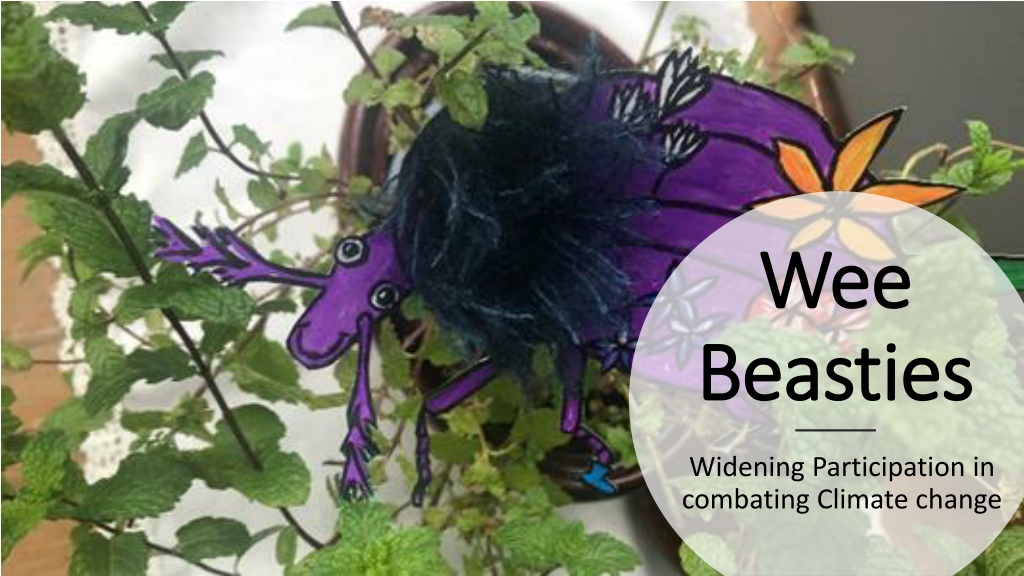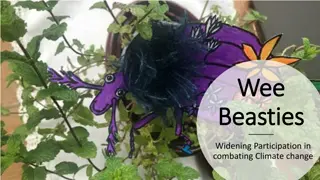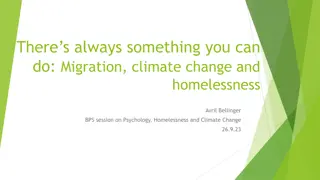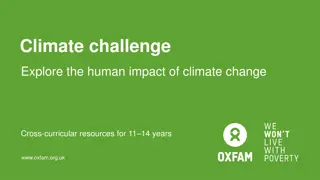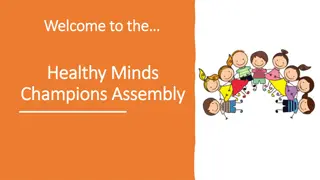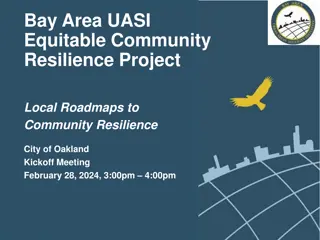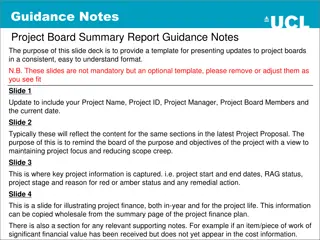Wee Wee Beasties Project: Encouraging Young Minds to Combat Climate Change
The Wee Beasties Project engages P7 S2 pupils in Scottish primary schools to invent their own unique creature and learn about climate change. Through this initiative, students also explore the University of Glasgow to understand how higher education can contribute to climate action. The project guides students through creating, imagining, and writing about their beasties, fostering environmental awareness and creativity.
Download Presentation
Please find below an Image/Link to download the presentation.
The content on the website is provided AS IS for your information and personal use only. It may not be sold, licensed, or shared on other websites without obtaining consent from the author. Download presentation by click this link. If you encounter any issues during the download, it is possible that the publisher has removed the file from their server.
Presentation Transcript
Wee Wee Beasties Beasties Widening Participation in combating Climate change
The Wee Beasties Project P7 S2 pupils in Scottish primary schools. pupils will invent their own Wee Beastie and learn about climate change, Pupils will then come to the University of Glasgow on a mission to discover how university study and research could help combat climate change.
Step One: Inventing your Beastie Draw your beastie and cut them out. Find a place in your local area where your beastie lives. Take your beastie there, and take their photo. Write about your beastie, explaining how they live, what they do, and what their life is like.
Step One Help with Imagining If you can t think of a whole new creature, try fitting two real world animals together how about a lion-mouse? How about a clam- centipede? Or a tiny elephant-bee with wings? If you have a real world kind of animal that you love, think about a cool variation on that creature what sort of robot parts might it have? What would it need to live somewhere close by where it normally can t live? What if it were amazingly small and needed something special to survive? If there is a monster that you really like, think about what if it was crossed with an animal. How about a zombie frog, or a ghost-shrew?
Step One Help with Writing Explain who your beastie is, and what sorts of things they do. Do some research to help you describe the environment your beastie lives in. Is your beastie an urban, suburban or rural beastie? What sort of plants, trees, flowers and other creatures live near your beastie? What sort of home does your beastie have? Does your beastie live on land or water? Does your beastie live under ground, in a tree, in the drains beside the pavement, in a pond, in a pool at the seashore, under an old mattress dumped in a field ? How does your beastie fit the environment they live in? What about their body or their habits makes them able to live there?
Scottish environmental information https://www.nature.scot/landscapes-and-habitats/habitat-types https://scottishwildlifetrust.org.uk/scotlands-wildlife/ https://www.nhm.ac.uk/discover/how-water-voles-left-their- riverside-homes-for-glasgow-grassland.html https://www.nhm.ac.uk/discover/urban-wildlife.html https://www.froglife.org/info-advice/amphibians-and-reptiles/ Look for as many more excellent sources of information as you can find!
Adaptation to Environment information https://www.nhm.ac.uk/discover/what-is-natural-selection.html https://www.nhm.ac.uk/discover/news/2021/september/animals- shapeshifting-to-adapt-to-rising-temperatures.html https://www.nhm.ac.uk/discover/how-do-camels-survive-in- deserts.html https://www.nhm.ac.uk/discover/news/2021/september/plants-and- pollinators-use-electric-fields-to-find-each-other.html Look for as many more excellent sources of information as you can find!
Creativity: Inventing your Beastie Engaging young people s imagination and creativity, while exploring the impact of climate change on their imaginary creature Increasing knowledge and emotional engagement with an issue that can seem too complex, too distant, or too overwhelming Building confidence as pupils see their own creative and intellectual work celebrated through inclusion as part of a website.
Step Two: Researching your Beastie Find out about your beastie s environment. How is it changing? How does climate change affect your beastie? What problems does your beastie face?
Independence: Research Skills Research skills are important for all - for highly able young people they can be a key to progress Teaching skills is vital, but it can also help to know about available resources Our project will support teachers and young people by providing some web-based resources Example: https://www.moredun.org.uk/foundation/outreach/an imation-series
Step Two help with doing research Your teacher will give you some websites to get started, but you can also find your own. That will mean you will have to spot which are good websites and which might not be very reliable websites. Think about: Does the website tell you who wrote it? Do they sound like a reliable person? Does the website have a date to tell you how old the information is? Is the website linked up to a reliable institution, like a university? Does the website give sources for its information? Does the website provide links to evidence? Is the website trying to sell you something? Can you find other websites that agree with this one?
Step Two help with writing Read about climate change internationally Read about climate change in Scotland Think about where your beastie lives which aspects of climate change would affect your beastie? Write about where your beastie lives and how climate change will cause them problems
Climate Change Information https://www.nhm.ac.uk/discover/anthropocene.html https://www.invasivespecies.scot/invasive-species https://www.nhm.ac.uk/discover/will-the-ocean-really-die.html https://www.nature.scot/doc/naturescot-climate-change-nature- information-sheet https://www.nature.scot/scotlands-biodiversity/key-pressures- biodiversity Look for as many more excellent sources of information as you can find!
More Climate Change Information https://www.wwf.org.uk/updates/10-myths-about-climate-change https://www.oxfam.org/en/what-we-do/issues/tackling-climate- crisis#:~:text=Oxfam%20campaigns%20for%20climate%20action,countries %20are%20supported%20to%20adapt. https://www.adaptationscotland.org.uk/why-adapt/impacts-scotland https://www.nhm.ac.uk/discover/news/2021/september/animals- shapeshifting-to-adapt-to-rising-temperatures.html https://www.wwf.org.uk/what-we-do/projects/our-climate-work-scotland Look for as many more excellent sources of information as you can find!
Step Three: Going to University Your beastie wants to learn what they can do about climate change. So, you can show them round the University of Glasgow Pick what your beastie should learn about to help them deal with climate change Write about what your beastie will do and why it will help
Widening Participation Many Scottish young people from areas of deprivation do not consider university, no matter how able they are or what their potential might be Many young people are unclear about what actually goes on at universities or how they might be involved Helping young people to imagine their beastie and themselves at university could support them in considering university for the future
Wee Beasties and CfE Inclusive, with young people able to engage at a level and in a manner that suits them. Designed to cover key Es and Os for pupils who participate Set up through a website which will make it straightforward to submit Beasties, to access resources and suggested materials, and visit the university virtually
If you would like to know more, email: Catherine.Reid@glasgow.ac.uk @catlaughing We would love to hear from young people, parents and teachers!
